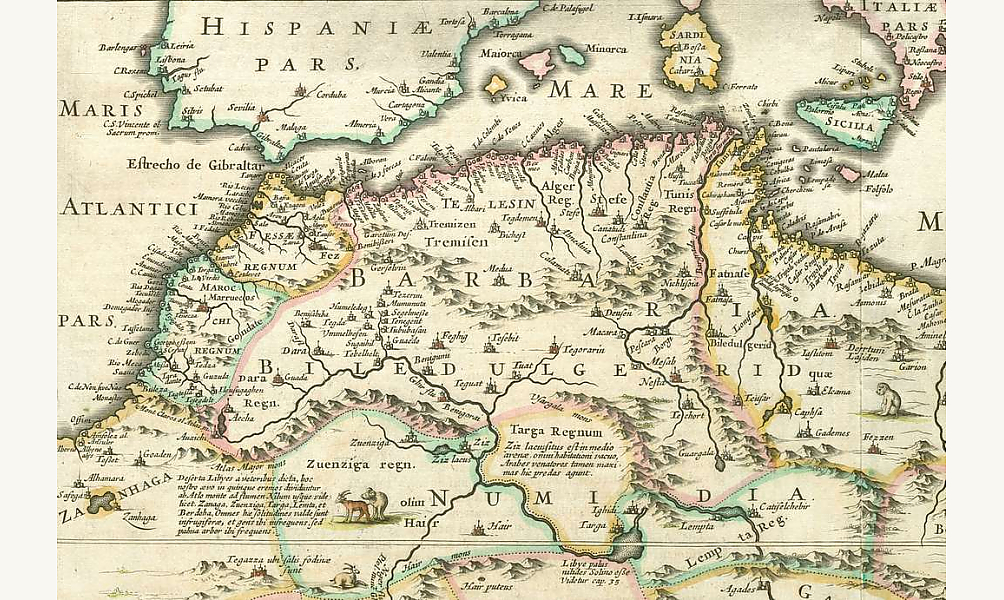Contrary to the common belief that Algeria was “created” by French colonization in 1830, it is essential to recognize that Algeria, under the form of the Regency of Algiers, existed long before the French invasion. From 1516 to 1830, the Regency of Algiers was a semi-autonomous state under the Ottoman Empire, with its own governance, controlling the territory of modern-day Algeria. This entity had a rich history and a distinct identity, acting as a key player in Mediterranean geopolitics, particularly in its maritime conflicts with European powers. One of the most notable episodes in this period was its conflict with the newly independent United States.
The Regency of Algiers: A Sovereign State under Ottoman Protection
The Regency of Algiers was established in 1516 by the famed corsair brothers, the Barbarossa brothers, who liberated Algiers from Spanish control. Although the Regency was officially part of the Ottoman Empire, it maintained significant internal autonomy. The local ruler, known as the Dey, was elected and governed the state independently, managing internal affairs without direct interference from the Ottoman Sultan.
This structure allowed the Regency of Algiers to function as a sovereign state, complete with its own laws, administration, and military forces, particularly its formidable navy. The Regency was not merely an extension of the Ottoman Empire but an independent political entity, recognized and engaged with by other powers in the Mediterranean.

A Key Player in Mediterranean Maritime Conflicts
The Regency of Algiers became notorious for its corsairs, who dominated the Mediterranean and Atlantic seas. These corsairs attacked European and American ships, demanding tribute in exchange for safe passage. Algiers’ maritime prowess made it a significant player in Mediterranean politics, often clashing with European powers, including the United States.
In the early 19th century, the United States, having recently gained independence, faced the same demands for tribute from the Barbary States (Algiers, Tripoli, Tunis) as the European nations. This led to two major conflicts: the First Barbary War (1801-1805) and the Second Barbary War (1815), where the United States sought to end the pirate activities and secure free navigation for its ships.
In 1795, the United States signed a peace treaty with the Regency of Algiers, agreeing to pay tribute in exchange for the protection of its ships from corsair attacks. However, after the Barbary Wars and decisive American military intervention, the United States ended the payment of tributes, contributing to the decline of Algiers’ naval power. These conflicts were seen as a fight for freedom of navigation and were a critical aspect of the sovereign authority of Algiers in the Mediterranean.
Algiers Before the French Invasion
It is crucial to understand that the Regency of Algiers functioned as an independent state long before the French invasion in 1830. The Regency had a stable economy, primarily driven by trade and corsair activities, and well-established political institutions. The society was hierarchical, and the state was governed efficiently under the leadership of the Dey.
The 1795 treaty with the United States is a testament to the Regency’s diplomatic and military influence, showing that Algiers was not merely a passive region under Ottoman control but an active political entity.
The End of the Regency of Algiers and the Beginning of French Colonization
In 1830, the French invasion of Algiers marked the end of the Regency of Algiers, after more than 300 years of existence. This event began the period of French colonization in Algeria, which would last until the country gained independence in 1962.
However, it is important to remember that Algeria existed as a sovereign state long before the arrival of the French. The Regency of Algiers was a recognized power, with its own government, military, and international relationships. The French invasion did not create Algeria; it ended the sovereign state that had already been in place for centuries.
The Regency of Algiers was far from being a mere Ottoman outpost; it was an independent state with a functioning government and a powerful role in the international arena. French colonization did not “create” Algeria, but instead ended a pre-existing state that had shaped the history of the Mediterranean. Understanding this legacy is crucial to recognizing the deep political and historical roots of Algeria before colonization.
For more in-depth stories on Algeria’s rich history and Mediterranean heritage, follow Africazine for informative and engaging articles!



